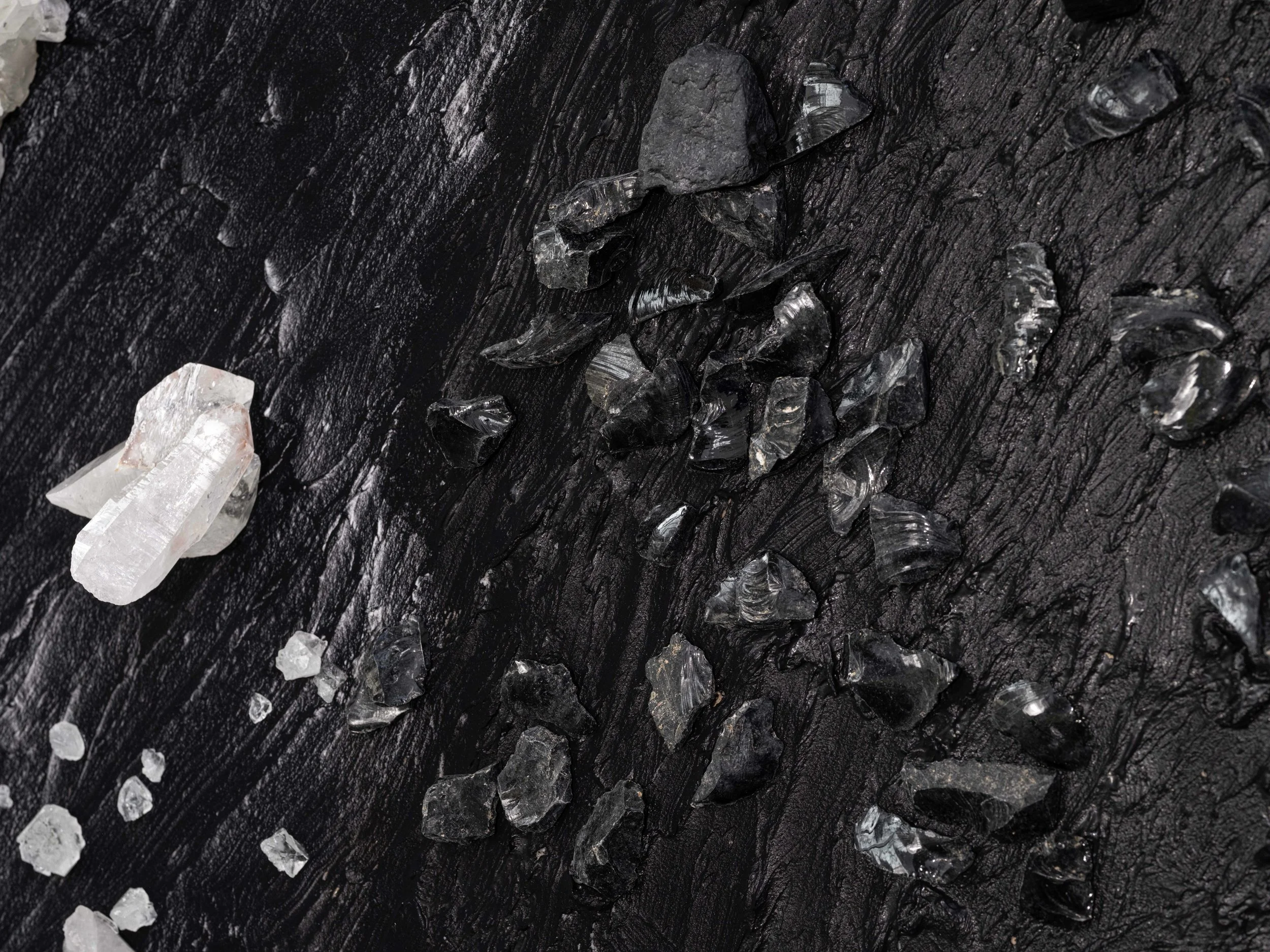Presented by Make Visible
Ryosokuin Zen Temple
591 Komatsucho, Higashiyama Ward, Kyoto, 605-0811, Japan
September 5 - October 1, 2025
Wings Over Crystalline Landscapes explores the quiet, luminous intersections between butterfly migration, mineral formation, and human contemplation. Installed at Ryosokuin Temple in Kyoto—a site steeped in Zen practice—this body of work invites viewers into a layered meditation on time, impermanence, and interconnectedness through painting, sculpture, and augmented reality.
Rooted in the materialist art movement, this work foregrounds the agency of matter—specifically, crystal formation—as an aesthetic and conceptual force. Rather than merely representing nature, the artworks co-evolve with it, allowing minerals to grow directly on painted and sculptural surfaces over time. Crystals are not passive embellishments but active collaborators—agents that shape and transform the work. This approach aligns with new materialist thought, where matter itself is seen as thinking, forming, and transforming. In embracing the slow, unpredictable logic of natural growth, the work invites viewers to witness time, transformation, and presence through the language of the earth.
The material aesthetics of crystal growth mirror the principles of Zen meditation, both unfolding through patience, stillness, and imperceptible change. Crystals form in silence, molecule by molecule, guided by internal lattice structures. In zazen, the practitioner cultivates clarity not through effort but by letting go—allowing insight to crystallize from within. Installed in a Rinzai Zen temple, the exhibition emphasizes this parallel between meditative practice and geological formation: both reveal how structure and order can emerge without imposition, through attunement rather than force.
The Asagimadara butterfly, known for its translucent blue wings and remarkable long-distance migration, serves as both subject and metaphor. Each autumn, this species traverses the Asian continent, crossing islands and mountain ranges—including the Kyoto basin—on its path southward. Along its journey, the butterfly passes over crystalline terrains rich in geological variation, such as the garnet-lined Hidaka Range in Hokkaido, the blue-green schist of Shikoku, and quartz-bearing landscapes in Taiwan and southern China. These specific minerals are embedded within the works, allowing the material terrain of the butterfly’s path to literally shape the artwork’s surface.
But this journey is under threat. The Asagimadara’s numbers are declining due to habitat loss, pollution, and climate change. At the same time, many of the earth’s crystals and minerals are endangered, rapidly extracted to meet the demands of industry, technology, and geopolitical conflict. This exhibition highlights not only the beauty of natural systems, but also their fragility. Through immersive technologies and educational components, it seeks to raise awareness of ecological interdependence.
Ultimately, Wings Over Crystalline Landscapes is both a meditation and a call to attention—a material and metaphysical reflection on slowness, resilience, and reverence. In tracing the ephemeral flight of a butterfly and the slow growth of a crystal, the work invites us to reconsider our pace, our presence, and our place within the wider choreography of the Earth.
Photographs courtesy of Misturu Wakabayashi and Taiji Terasaki Studio













